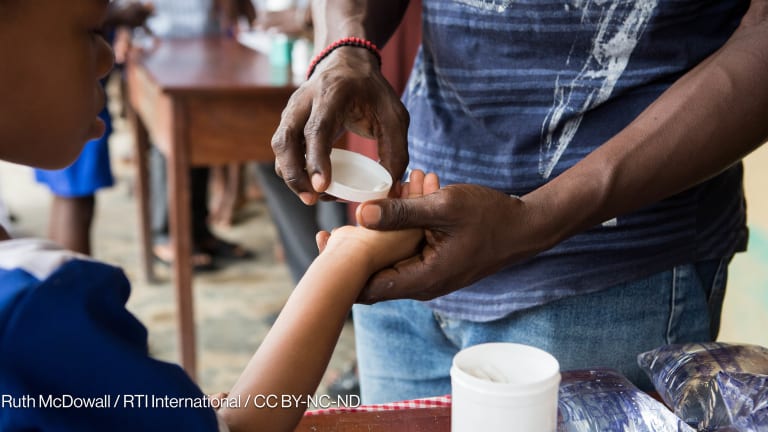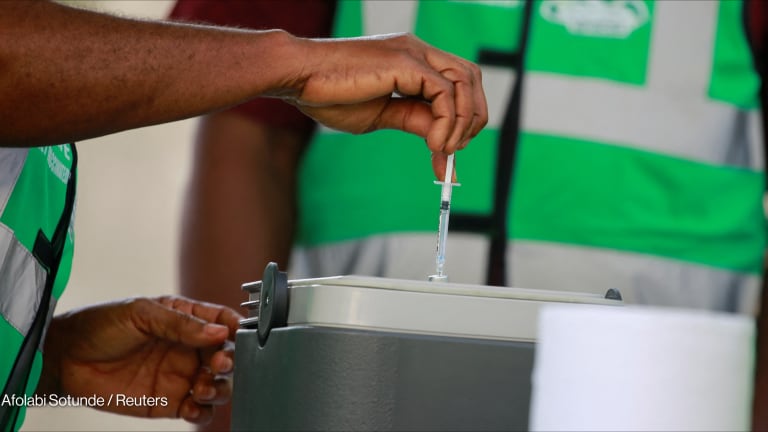
Imagine that there is a small fire in your kitchen. You first try to put it out with a towel. When that does not work, you douse it with water, only to see the flames grow. Finally, you leave home and call the fire department. By the time they arrive, the fire has spread throughout your home and reached the neighbor’s house.
Pandemics spread similarly. Preventing them, and preparing for them, carries a lower cost than rebuilding once the disease has already spread and lives have been lost. The question is, how do we make sure that everyone has access to prevention tools and a “fire extinguisher?” Here are three ways governments, private companies, and academia can help us prepare.
1. Invest in early research
From laboratory to patient, the process to develop and deliver a new drug typically takes 10 to 15 years. Although the COVID-19 vaccine became available to consumers in record time, researchers had studied messenger RNA technology for decades before the start of the pandemic.
This means that research into new tools to combat future pandemics should start now. The good news is that there are some encouraging signs of progress.
Medicines for Malaria Venture, a malaria drug research and development organization that with partners has generated 16 medicines saving 15.4 million lives, is now expanding its drug discovery activities to include diseases that could become the next threat to global health security.
Adjacent to its core work in malaria, the pilot initiative uses technological platforms to discover new drug candidates against viruses, bacteria, fungi, and parasites, evaluating and optimizing them for further development. The goal is to advance research into diseases that could become pandemics or global health emergencies, especially those lacking current treatments or facing drug resistance.
Of course, there are organizations fully dedicated to pandemic preparedness, such as the Coalition for Epidemic Preparedness Innovations, or CEPI. MMV, CEPI, and several other organizations share the product development partnership, or PDP, model. The model has been successful in generating a pipeline of medical technologies for malaria and other diseases. PDPs catalyze innovation in areas with little traditional investment.
2. Leverage innovative partnerships
How can robust financing be created for research into a threat that does not yet exist?
The PDP model is a proven path to unlocking innovation where markets provide little or no incentive. PDPs leverage partners to share knowledge and risk, pulling resources to develop products for which a single entity would be unable or unwilling to take on the investment.
Since 2010, a small group of 12 product development partnerships has developed 79 health technologies — treatments, tests, and other innovations — most of which are used to combat neglected and tropical diseases of the global south. These innovations have reached more than 2.4 billion people.
Why the world isn’t ready for the next pandemic
Many of the initiatives that were put in place in the past two years have yet to be completed or fully functioning, and many health workers have quit their jobs. Inequalities also persist, health workers and experts said.
PDPs have also made key contributions to combatting the COVID-19 pandemic, such as conducting clinical trials and developing diagnostics. The robust research infrastructure built by PDPs over the past 20-30 years can be used to bring forward new tools to prepare for the next global health threat.
3. Harness the power of artificial intelligence
Artificial intelligence tools are transforming health innovation. The most compelling benefits are the potential to speed up drug discovery and development and improve the quality of new health technologies.
AI tools can be integrated into early-stage research in several innovative ways. For example, using data modeling to predict whether a molecule will be effective against a particular pathogen, using generative design techniques to make new compounds with highly desirable properties, and selecting the most promising compounds for further optimization.
AI tools are already revolutionizing drug discovery in malaria, and these models can be replicated to bring forward new tools to combat a future pandemic. Based on a neural network model that mimics the way the human brain processes data, the Malaria Inhibition Prediction tool was trained on a staggering 5 million compounds and data from industry partners. The result? This open-source tool has helped MMV increase its efficiency in discovering antimalarial compounds, which are the starting points for drug discovery, by tenfold.
Incorporating AI into drug discovery is not only about speeding up the process; it is about making it smarter, more efficient, and ultimately more effective in delivering lifesaving treatments to those who need them most.
The next pandemic is not a matter of if, but when. Investing in early research, leveraging innovative financing models such as PDPs, and harnessing cutting-edge technologies will prepare us to combat future global health threats more effectively. We have the potential to mitigate the damage and save countless lives, by ensuring everyone has access to prevention tools and a “fire extinguisher.”
Learn more about how product development partnerships create impact: https://www.keepingthepromisereport.org/









